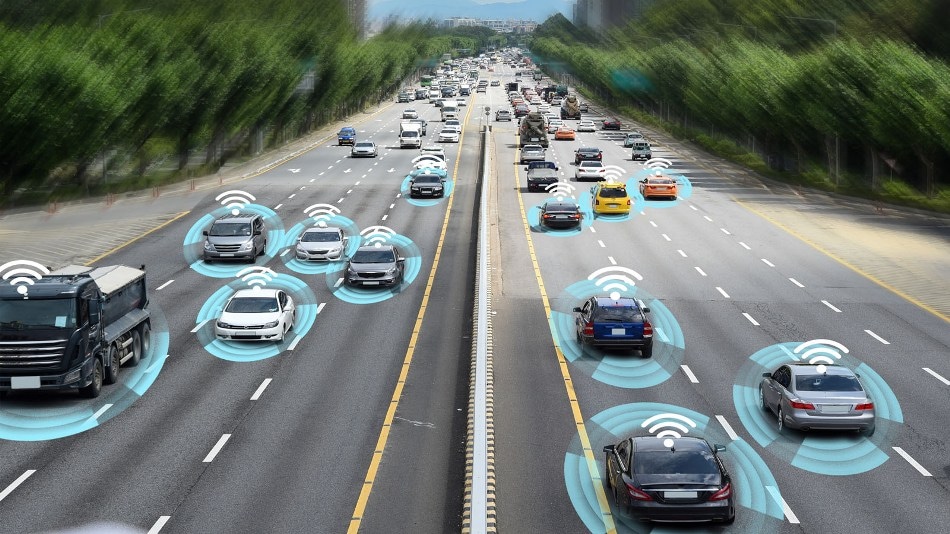Sep 11 2019
Today, vehicle manufacturers are facing an ever-growing demand to provide better fuel economy, improved engine performance, and reduced emissions. However, it is not easy to achieve these goals.
 Utilizing ALCF supercomputing resources, Argonne researchers are developing the deep learning framework MaLTESE with autonomous—or self-driving—and cloud-connected vehicles in mind. This work could help meet demand to deliver better engine performance, fuel economy and reduced emissions. (Image credit: Shutterstock/Ju Jae-young.)
Utilizing ALCF supercomputing resources, Argonne researchers are developing the deep learning framework MaLTESE with autonomous—or self-driving—and cloud-connected vehicles in mind. This work could help meet demand to deliver better engine performance, fuel economy and reduced emissions. (Image credit: Shutterstock/Ju Jae-young.)
Now, scientists from the Argonne National Laboratory of the U.S. Department of Energy (DOE) are creating the deep learning framework Machine Learning Tool for Engine Simulations and Experiments (MaLTESE) to overcome this challenge.
Considering the roller coaster ride of acceleration, deceleration, and hard stops, daily commute takes a toll on the engines. Weather and road conditions together with individual driving habits also have an impact on the engines.
Automotive manufacturers are always looking for innovative techniques to improve the operation of engines under these varied conditions. However, with more than 20 different parameters impacting emissions and fuel economy, it can be a slow and costly process to determine the right method.
But what if machine learning and high-performance computing (HPC) tools could search through infinite combinations of parameters and estimate outcomes for the commutes of innumerable drivers in real time?
Researchers Shashi Aithal and Prasanna Balaprakash at DOE’s Argonne National Laboratory are making use of supercomputing resources at the Argonne Leadership Computing Facility (ALCF) to develop MaLTESE with cloud-connected and self-driving, or autonomous, vehicles in mind.
But before that, the researchers believe that the deep learning framework can be utilized to create a manufacturer-like onboard system that integrates the power of machine learning and HPC for a new range of real-time adaptive learning and controls.
To study how different driving and engine operating conditions have an impact on engine emissions and performance, the researchers employed MaLTESE to replicate a standard 25-minute drive cycle of 250,000 vehicles—the estimated traffic flow of four main Chicago freeways during peak hour.
To perform the simulations, the researchers used almost the full capacity of the ALCF’s Theta system—one of the most powerful supercomputers in the world. These simulations were concluded in less than 15 minutes, which is less than the time it actually takes to make the drive.
At present, it takes several days to complete a high-fidelity simulation of just a single engine cycle, even on a massive supercomputer. This is because a standard commute, or drive cycle, has many different engine cycles.
It’s a very precise computational fluid dynamics model that takes a lot of computing hours to run and get an output. For the given driving conditions and driving behavior, we want to know a multitude of things, like nitrogen oxide and carbon emissions, and efficiency. Simulating that takes a long time.
Prasanna Balaprakash, Researcher, Argonne National Laboratory
Earlier, Aithal had created a physics-based, real-time engine simulator known as parallel Multi-fuel Otto Diesel Engine Simulator (pMODES) that runs relatively faster than conventional engine modeling tools. Also, it can simultaneously mimic the emissions and performance of an infinite number of drive cycles.
pMODES—a high-impact tool for drive simulation on leadership-class machines—received the HPC Innovation Award from IDC Research (now Hyperion research) in 2015. The merging of Aithal’s pMODES and the simulation-driven deep-learning tools being studied by Balaprakash resulted in the MaLTESE tool.
The engine simulation outputs obtained from pMODES are utilized to train a deep neural network to “learn” the impact of engine/transmission design and driving conditions on the vehicle’s emissions and performance.
The trained neural network would then be able to estimate the emissions and performance of the engine for a set of inputs in just microseconds. This puts on-board real-time adaptive control within the world of possibility.
“Simulation-driven machine learning is ideally suited for applications with multiple inputs and multiple outputs requiring large HPC resources, such as in drive-cycle analyses” added Balaprakash. “These tools can be trained with a relatively small subset of the vast parameter space and then be used to make accurate predictions about other scenarios without the need for actually conducting the simulations.”
The researchers’ simulation on the Theta system is regarded as the single largest drive-cycle simulation performed simultaneously on a cutting-edge supercomputer in real time. It is also the first machine learning-based prediction of drive-cycle properties of innumerable cars on city freeways and roads during peak hours.
The MaLTESE effort is a great example of how Argonne supercomputing resources enable researchers to combine large-scale simulations with machine learning methods in the development of novel tools for real-world applications, such as engine design and autonomous vehicle technologies.
Michael Papka, Director, ALCF
The researchers’ findings were presented at the ISC High Performance conference conducted in June 2019 in Frankfurt, Germany.
MaLTESE has the potential to be a disruptive technology aimed at simulating and learning critical information about engine performance, emissions and vehicle dynamics in real time. MaLTESE could lead to a rapid paradigm shift in the use of HPC in the design and optimization and real-time control of automotive-features with far-reaching implications for autonomous and connected vehicles.
Shashi Aithal, Researcher, Argonne National Laboratory
Balaprakash’s study was partly supported by DOE’s 2018 Early Career Award funded by the Advanced Scientific Computing Research program within the DOE Office of Science. The use of ALCF computing resources in the study was assigned through the ALCF’s Director’s Discretionary Program.